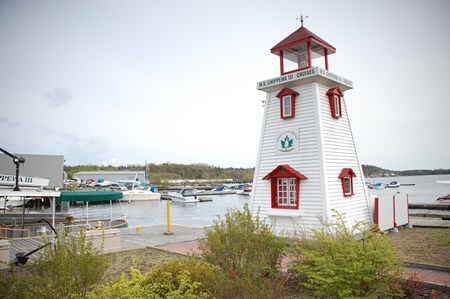The Parry Sound area has always been a popular place for cottagers and campers.
But when the main economic driver is the tourism and hospitality industry, it's subject to a degree of uncertainty from seasonal factors, high gas prices and the travel industry's fickle nature.
Three municipalities are collaborating to create a plan to identify and market the area's business potential and encourage investment from outside and local sources.
"The general rule of thumb is 80 to 85 per cent of new business comes from within," says Nicole Sullivan, Parry Sound's economic development coordinator.
A Regional Development Economic Advisory Committee (RDAC) wants to diversify the local economy by taking stock of what activity is going on and determine what new industry best compliments the existing base.
A previous effort to get seven area municipalities to think as one turned into a huge political football when it came to issues such as funding big capital projects like Parry Sound's new hospital.
There's now a slimmed down version involving the Town of Parry Sound, McDougall and Seguin Townships to come up with an economic development strategy for all three.
They want to encourage local businesses to invest and expand by cutting bureaucratic red tape, streamline the municipal approvals process, and enact more business-friendly bylaws.
"Rather than go out and chase smokestacks to attract people to come here, why don't we build the infrastructure inside the community?," says Bill Spinney, general manager of the Parry Sound Area Community Business and Development Centre.
The group has produced a handful of ideas such as having a more visible community presence for North Bay's Canadore College beyond its campus on the second floor of a downtown building.
What's needed is local niche programming in health services and skilled trades training.
Sullivan says the town has been consulting with local business owners in identifying the local strengths and weaknesses and what can be done to make their work function easier.
A new study by consultants Malone Given Parsouse revealed that based on employment numbers in recent years, there has been growth in arts, entertainment and recreation (golf courses, marinas); construction, real estate and leasing; and the health care and social assistance sectors.
They have identified four emerging 'trigger' opportunities revolving around development on the waterfront, retail, health care and new cottage construction.
The consultants recommended the town look to attract businesses in 14 areas including construction, property maintenance, skilled trades training, specialty retail, accommodations and catering services. There's also room for growth on the tourism services side and aviation manufacturing at the Parry Sound airport.
The report says the cottage construction and conversion activity is creating an annual demand for 50 new employees annually and big box retail expansion has created as many as 200 jobs. By 2010, 400 jobs could be created in those two areas.
Spinney finds there's reason for optimism in the local economy despite some bleak demographic numbers in the last federal census. The 2006 population numbers for Parry Sound released by Statistics Canada indicated the town lost five per cent of its residents (from 6,124 to 5,818) since 2001. Spinney says in his analysis, people in the 20 to 30 age category grew by more than 200 and the local hospital recorded 42 births between January and February.
The community isn't going downhill as some have forecasted and it is not aging, he says.
There's a four-lane highway to southern Ontario, a shiny new hospital and plenty of retail development either under construction or expanding.
Spinney says former Parry Sound residents are slowly coming back to raise families. He's starting to see more business start-ups and people are making investments for self-employment. He says the municipalities need to provide the infrastructure and services to make that happen.




